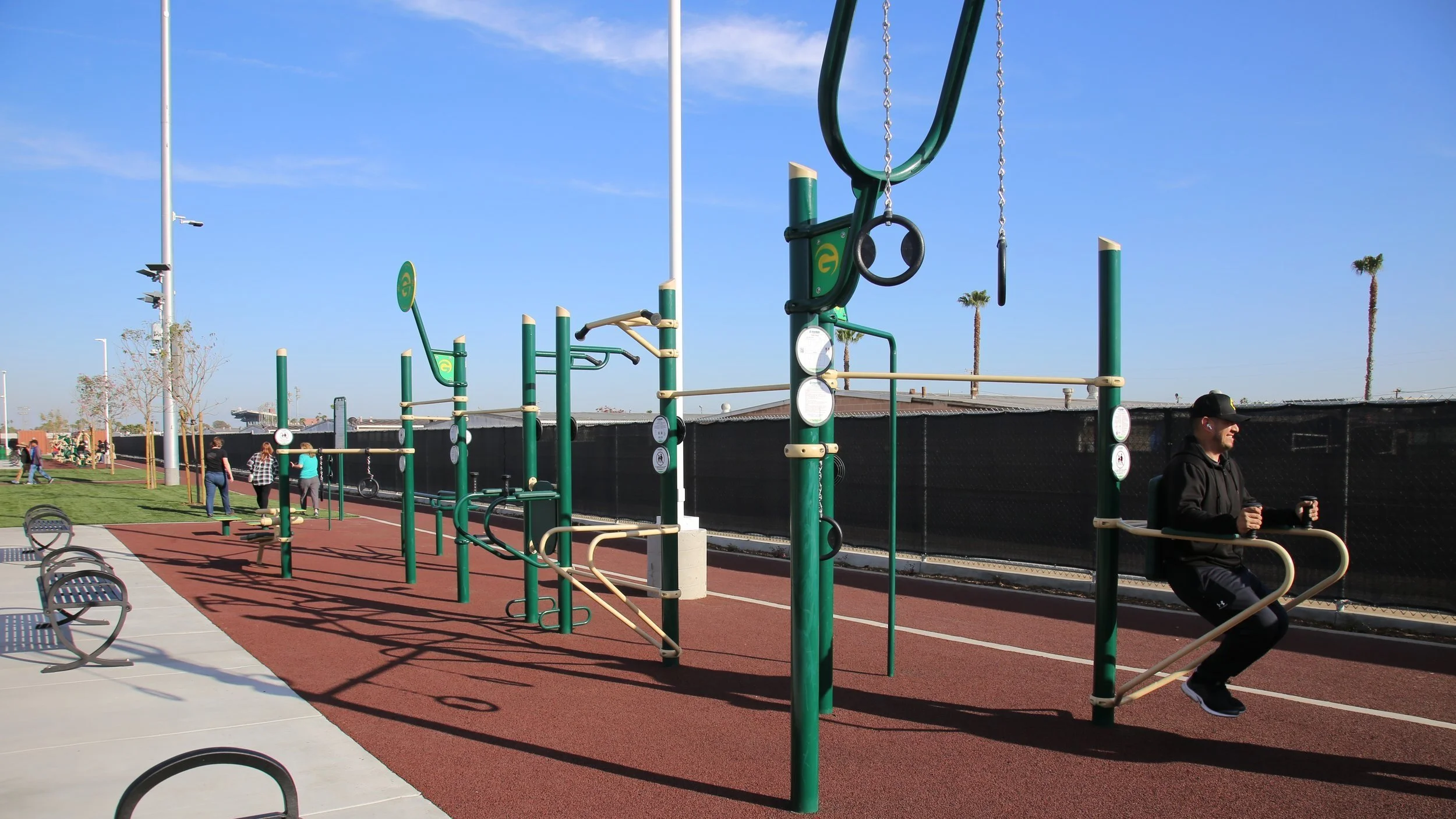Why Intergenerational Play Matters: Building Stronger Communities
In a world buzzing with constant notifications from social media and emails, meaningful interactions are becoming rarer across all ages. Intergenerational play helps bridge this gap by bringing people of all ages together through shared experiences. Whether it’s a grandparent passing down a favorite childhood game or a teen exploring the park with a younger cousin, these moments create lasting connections, strengthen communities, and enhance well-being for everyone involved.
What Is Intergenerational Play?
According to Transformational Impact, intergenerational play refers to “an active exchange or connection between and among the generations.” It unites people of all ages through shared activities, fostering learning, bonding, and mutual respect.
In a playground setting, true intergenerational play happens when all generations participate in one activity together - like spinning on a merry-go-round - rather than being separated into different play areas. This shared experience deepens connections and strengthens relationships in a way that age-segmented play cannot.
By engaging in intergenerational play, families and communities build lasting bonds that promote both physical and mental well-being for everyone involved.
The Benefits of Intergenerational Play
Studies show that when parents and children engage in play together, it enhances their shared experiences and provides mutual physical, social, and emotional benefits. Intergenerational play goes even further - meeting the needs and interests of the whole family by creating meaningful opportunities for connection, learning, and fun across all ages.
Promoting Learning and Skill Sharing
Knowledge Transfer: Intergenerational play creates opportunities for younger generations to learn life skills, cultural traditions, and wisdom from older generations, while older adults can gain new skills, such as technology use, from younger participants. Whether engaging in games, creative activities, or fitness classes together, these shared experiences foster learning, connection, and mutual growth.
Encouraging Understanding: Intentional interaction between generations fosters empathy and mutual respect. Through intergenerational play, children can connect with older family members in meaningful ways, sharing stories, laughter, and experiences that strengthen family bonds. These moments help bridge generational gaps and create lasting connections built on appreciation and understanding.
Cognitive Stimulation: Engaging in new games or activities stimulates the brain for all participants, enhancing memory and creativity. For children, play plays a crucial role in cognitive development, supporting essential functions like problem-solving and decision-making. For adults, it provides cognitive stimulation that helps maintain memory and mental agility. According to NIFPlay, regular participation in play is linked to slower rates of memory loss and a reduced risk of dementia, making intergenerational play a valuable activity for all ages.
Enhancing Physical and Mental Well-Being
Emotional Support: Intergenerational play helps older adults feel connected and valued while giving children a sense of security and belonging. For seniors, interacting with younger generations can reduce feelings of loneliness and isolation, fostering a sense of purpose and joy. The energy and enthusiasm of children bring laughter and light into their lives, reminding them of their own youth. Meanwhile, children benefit from the wisdom, guidance, and emotional support older adults provide, helping them develop healthy emotional attachments and a stronger sense of identity.
Promoting Physical Health: Engaging in outdoor play supports an active and healthy lifestyle for all ages. Whether you're a young child, a teenager, an adult, or a senior, spending time outdoors promotes physical fitness, reduces stress, and enhances overall well-being. From running and climbing to walking and socializing, outdoor play provides opportunities for movement, fresh air, and meaningful connections, leading to lasting positive effects on both body and mind.
Strengthening Communities
Social Cohesion: Shared activities help build stronger, more inclusive communities by bringing together people from different age groups and backgrounds. When families come together to play, they can bond, collaborate, and learn to appreciate one another’s unique perspectives, fostering a sense of unity and inclusivity. This collective experience strengthens community ties and creates a welcoming environment where everyone can engage, share joy, and work together toward common goals.
Cultural Exchange: Intergenerational play is more than just having fun together; it’s a powerful way to share stories, pass down traditions, and instill values that enrich a family’s culture. These interactions foster a sense of belonging and mutual respect between generations, strengthening the social fabric of communities. By engaging in play, families create meaningful connections that not only bond them but also cultivate a shared legacy of understanding and togetherness for future generations.
Strengthening Bonds: Playing outside helps family members connect through shared activity and adventure. The outdoor recreation spaces provide a place for families to engage in physical activities, explore nature, and create lasting memories together. By spending time outside, family members can strengthen their bonds, improve communication, and enhance their overall well-being.
Examples of Intergenerational Play in Action
Community Playgrounds Designed for All Ages
Parks and playgrounds that offer features for children, adults, and seniors - like exercise equipment, walking paths, and shaded seating areas - naturally foster intergenerational play. Designing inclusive recreation spaces helps promote meaningful connections across generations.
Group Activities and Classes
Programs like gardening clubs, reading-in-the-park sessions, or art workshops bring together participants of all ages to learn and collaborate. These intergenerational activities support cognitive stimulation and knowledge transfer, allowing all age groups to share their experiences and insights while fostering connection and learning.
Ready to Play?
Intergenerational play is a meaningful way to strengthen relationships, foster understanding, and build vibrant, resilient communities. By designing spaces that encourage connection across ages, we can bridge generational divides, enrich lives, and create environments where everyone feels valued, included, and inspired to play together.
Looking for products to specify? Check out GameTime's intergenerational playground solutions on CADdetails.com.







